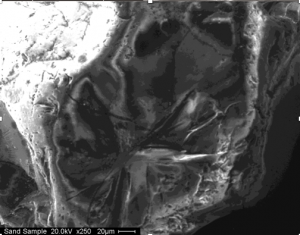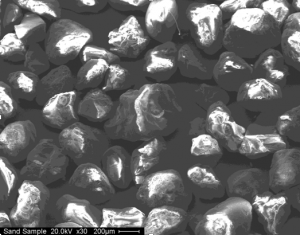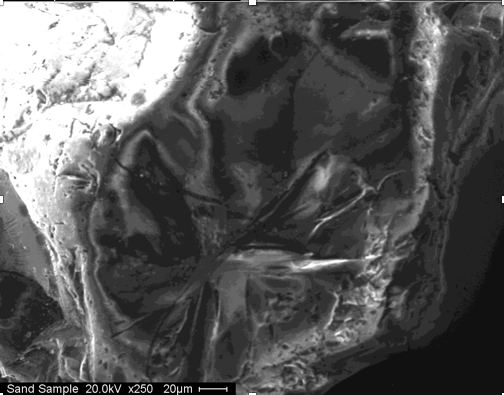This is the second installment of a new column called “Science of the Shore,” written by Bianca Charbonneau, Phd candidate. Have a science question you would like answered? Email Bianca at [email protected]
The sand and beach are two words that go hand in hand. In fact, the literal definition of a beach is a pebbly or sandy shore. Sandy shores dominate much of the US coastline, but have you ever

thought more about this inorganic substance that always finds its way back home with you after you’ve left the coast?
Around the world sand is continually forming through a variety of processes related to the reduction (weathering) of a large object, like a rock, or a seashell, into a smaller grain – i.e. sand. Most sand on the planet (~70%) is quartz (aka silica) sand; the recipe for the mineral quartz is oxygen and silicon - one silicon atom for every two oxygen atoms. Though small, sand is tough because of the crystalline and pyramid-like bond between the silicon and oxygen.
In general, rocks are made up of a variety of minerals, but quartz is present in rocks worldwide because of the makeup of the Earth’s crust. Quartz grains are surrounded by other elements that make up the rock, and when those other elements weather away the quartz grain is freed. Many other minerals will breakdown chemically or mechanically during weathering or once freed, whereas quartz particles will just get smaller and more rounded because only mechanical weathering (force) can break quartz particles. Most sand is made up of quartz, because it can survive the tumbling to ultimately make it to our beaches and dunes via wind, water, people, etc.!
If the size of that fallen grain is small enough (from 2-0.0625mm in diameter) then it is classified as a grain of sand, as opposed to a boulder, cobble, pebble, granule, silt, or clay; we classify grains into classes based on their diameter using the Udden-Wentworth Scale. Rocks are constantly being weathered and since quartz is durable and abundant, quartz grains are constantly being freed - over a billion sand grains are born each second.
A sand grain can also become “reburied” in a rock formation, but will be freed again with time. Most of the grains you see have been “through the mill” – freed, reintegrated into rock, exposed, and then freed again – over five times in their existence. If you compared one grain of sand to another with the naked eye you won’t notice too many differences aside from color and size, but the erosion cycle takes its toll on grains and is apparent in marks on their surface.

If you magnify a grain (to 250x or more), you will see that what you thought looked so smooth and round is actually craggy, pitted, textured, and dented; a sand grain surface actually looks very similar to the surface of Mars. We say that a scar tells a story and similarly, each mark on a sand grain tells a part or event in its life. Because of this, just like no one person is exactly alike, every grain of sand in the universe is unique as well.




